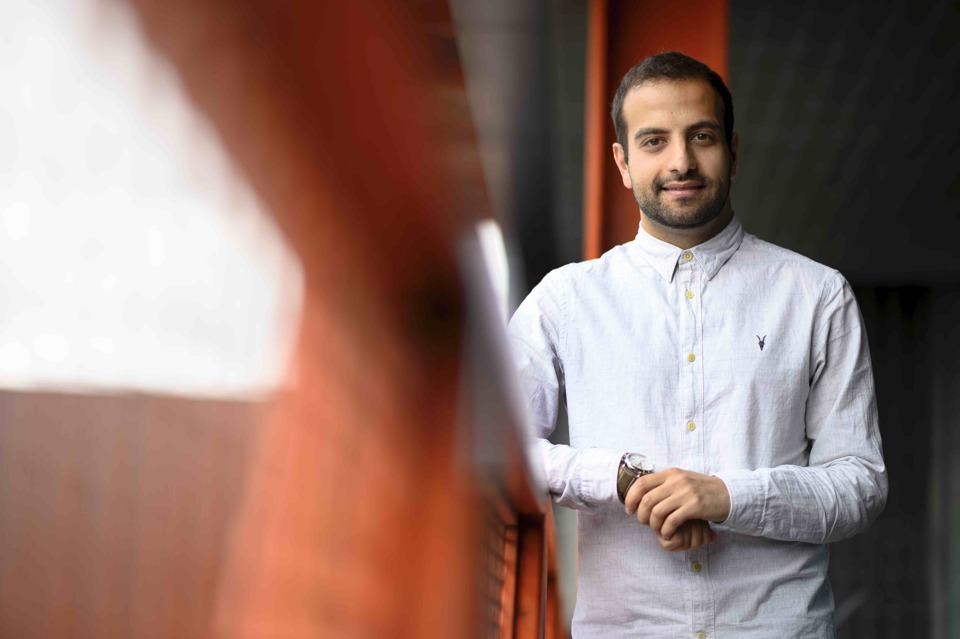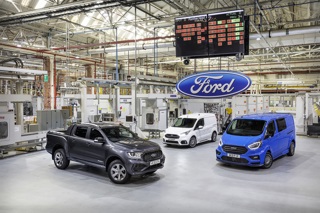Ford will be rolling out its last mile delivery initiative to fleet operators following a successful trial with Hermes in London.
The app-based service uses Ford’s Mode:Link multi-modal routing and logistics software to coordinate traditional delivery vans with pedestrian couriers, identifying safe locations for drivers to park within walking distance of multiple delivery addresses.
From there, the final leg of the journey is completed on foot as couriers collect parcels and make deliveries to a mix of high-rise, business and residential buildings.
"We work with the fleet to see how well their current distribution patterns fit the model," Richard Balch, Ford
Trials started with Hermes last year and have since evolved to include a self-driving research programme whereby the Ford Transit was given the appearance of an automated vehicle (AV), including cameras and stickers, but was still controlled by a driver. Couriers were instructed not to engage with the driver.
Ahmad Jasim (pictured), Ford business design lead, autonomous vehicles, said the results of the AV trial were still being analysed, but there had been some interesting early findings.
“Without the driver interacting with the partners, the transfer of bags and parcels was quicker,” he said.
“They also interacted with the vehicle, using it as a refuge on rainy days or as shelter while they looked through their bags or at their phones.”
Couriers use an app on their phone to open their mailbox and collect the items for their route. There was initially some nervousness, described by Ford director AV & mobility Richard Balch as akin to self-service tills at the supermarket.
“But like that technology, they quickly became used to using it,” he added. “The trial has been really effective at reducing emissions from fewer vehicle miles and the number of vans used. The software works.”
Balch estimates that each application could on average result in four vehicles replaced by one, removing three from the road.
“We work with the fleet to see how well their current distribution patterns fit the model – we have a simulation tool for that,” he said.
“However, the real benefit is that people on foot don’t get stuck in traffic, so there’s a reliability benefit that we can predict.”
While the concept works best in dense areas, with multiple drops, it can also be operated in suburban environments with the couriers using bikes instead of walking.
Each bay is packed via an algorithm which assesses demand and meeting points and allocates labour.
Jasim said: “The logic works. If there is an extra few hundred parcels, the app can either add an extra porter or add an extra hour to each existing porter’s shift. We tested it during peak season, and it coped.”
For some routes, a similar number of people were employed by Hermes, just in courier roles rather than van driver roles; in peak times the number could rise slightly.
POSTIVE FEEDBACK FROM FLEETS
Feedback from the couriers was positive; they enjoyed being outdoors and felt less pressured from not driving in heavy traffic.
“Walking reduces stress levels and they are also super delivery focused. The first and last thing they do is deliver a parcel; they don’t have to pack the van or do the driving,” Jasim said. “As a result, the experience and interaction with the customer on the doorstep delivery was better.”
Each courier walks between five and eight kilometres a day, helping to improve their health with inevitable longer-term benefits for the health service. Distances between drops typically ranged from a few minutes to a few seconds.
The AV element was an obvious evolution for a vehicle which simply takes goods from the depot to the city. It piqued interest from the public and other delivery companies alike.
“There was an ‘Aha’ moment – this is multi-modality,” Jasim added.
Ford is now in talks with other fleet operators, including home delivery, distribution and supermarkets – anyone that moves goods around. But it is keen to hear from other operators if they feel the concept could suit different applications.
“We intend to take this forward as it’s been successful,” said Balch. “Our key message is we are going beyond the technology to come up with business solutions that work for the fleet. We want to learn, help the fleet to learn and understand how technology can transform them.”
























Rebecca L - 23/08/2021 13:40
What about the MSD impact on carrying potentially heavy parcels for longer pedestrian travel distances?